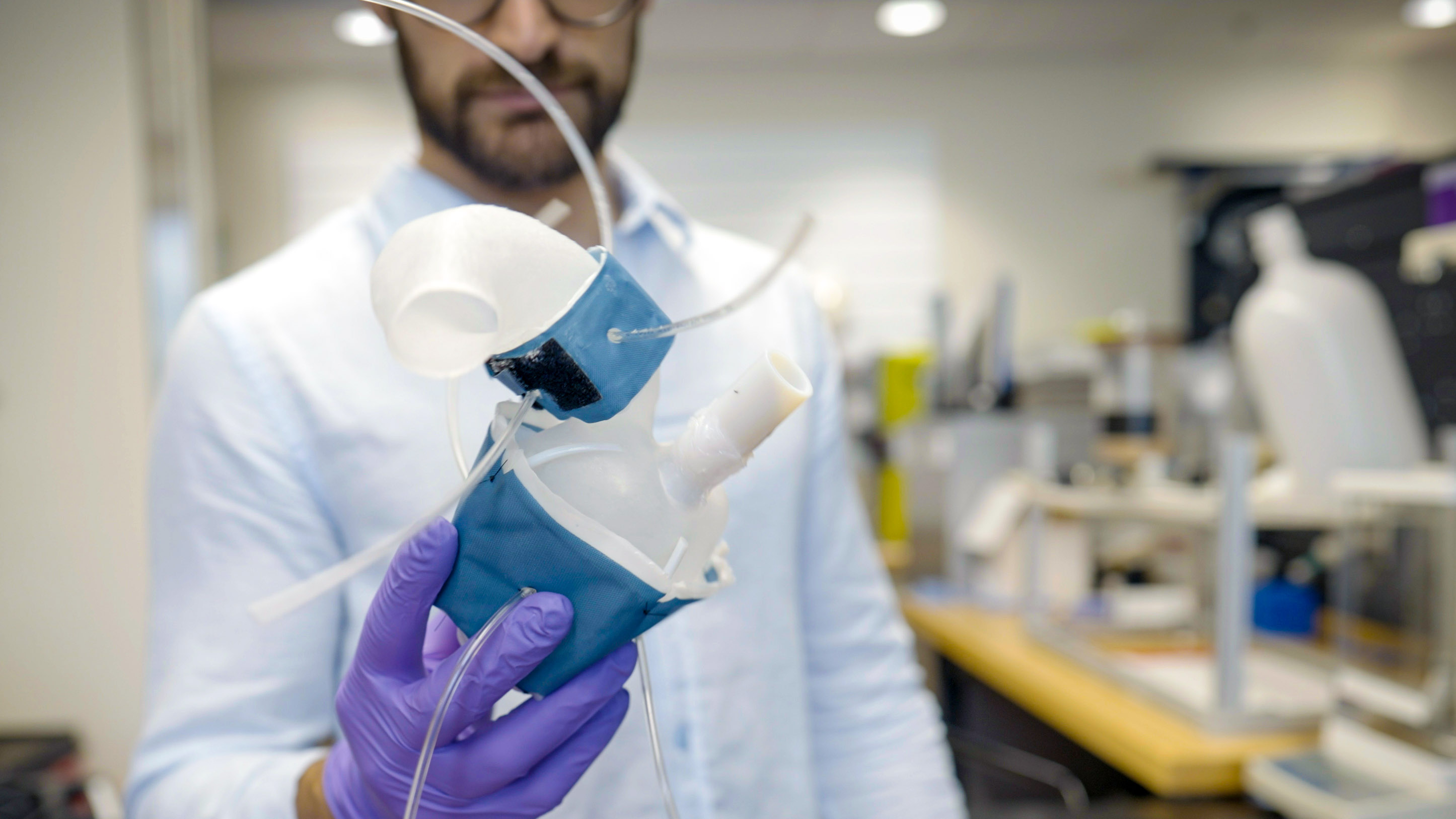Custom-made robotic hearts beat true
Soft, 3D-printed models generated from medical scans could help tailor treatments for cardiac disease.

No two hearts beat alike—and that can make it more complicated to treat heart disease. But a team of MIT engineers and others has developed a way to copy a patient’s unique heart in robotic form to help test different therapies more accurately.
The procedure involves first converting medical images of a patient’s heart into a three-dimensional computer model, which the researchers then 3D-print using a polymer-based ink that can squeeze and stretch once cured. The result is a soft, flexible shell in the exact shape of that person’s heart. The team can also use this approach to print a patient’s aorta, the major artery that carries blood out of the heart to the rest of the body.
To mimic the heart’s pumping action, the team fabricated sleeves similar to blood pressure cuffs that wrap around a printed heart. The underside of each sleeve resembles precisely patterned bubble wrap. When the sleeve is connected to a pneumatic system, researchers can tune the airflow to rhythmically inflate the sleeve’s bubbles and contract the heart, replicating the patient’s blood-pumping ability.
“We’re not only printing the heart’s anatomy, but also replicating its mechanics and physiology,” says mechanical engineering professor Ellen Roche, who led a team developing a “biorobotic hybrid heart”—a general replica made from synthetic muscle that could be controlled to mimic heartbeats—in January 2020. “That’s the part that we get excited about.”
The researchers can also inflate a separate sleeve surrounding a printed aorta to constrict the vessel. This constriction, they say, can be tuned to mimic aortic stenosis—a condition in which the aortic valve narrows, causing the heart to work harder to force blood through the body.
Doctors commonly treat aortic stenosis by surgically implanting a synthetic valve designed to widen the natural one. In the future, the team says, doctors could potentially implant a variety of valves into a printed model of the heart and aorta to see which design results in the best function and fit. The heart replicas could also be used by research labs and medical-device manufacturers as realistic platforms to test therapies for various types of heart disease.
“All hearts are different,” says Luca Rosalia, a graduate student in the MIT-Harvard Program in Health Sciences and Technology and a coauthor of a paper on the work, who re-created the lab’s setup in his dorm room to continue tweaking the design during the covid-19 shutdown. “There are massive variations, especially when patients are sick.”
Ultimately, Roche says, the replicas could help develop and identify ideal treatments for individuals with especially distinctive cardiac anatomy, which often develops as hearts and blood vessels work to overcome compromised function.
“Designing inclusively for a large range of anatomies, and testing interventions across this range, may increase the addressable target population for minimally invasive procedures,” she says.
Keep Reading
Most Popular
Large language models can do jaw-dropping things. But nobody knows exactly why.
And that's a problem. Figuring it out is one of the biggest scientific puzzles of our time and a crucial step towards controlling more powerful future models.
The problem with plug-in hybrids? Their drivers.
Plug-in hybrids are often sold as a transition to EVs, but new data from Europe shows we’re still underestimating the emissions they produce.
Google DeepMind’s new generative model makes Super Mario–like games from scratch
Genie learns how to control games by watching hours and hours of video. It could help train next-gen robots too.
How scientists traced a mysterious covid case back to six toilets
When wastewater surveillance turns into a hunt for a single infected individual, the ethics get tricky.
Stay connected
Get the latest updates from
MIT Technology Review
Discover special offers, top stories, upcoming events, and more.